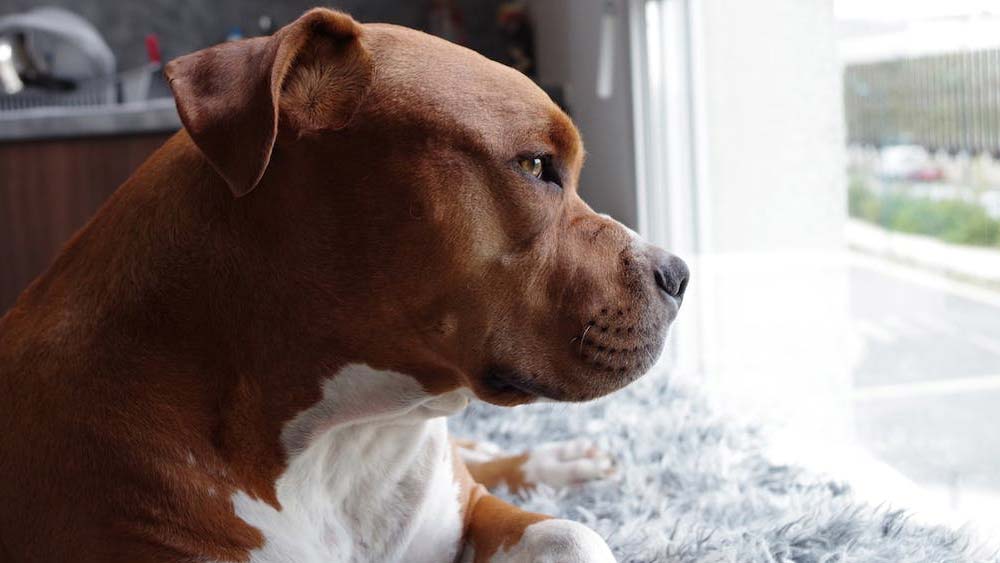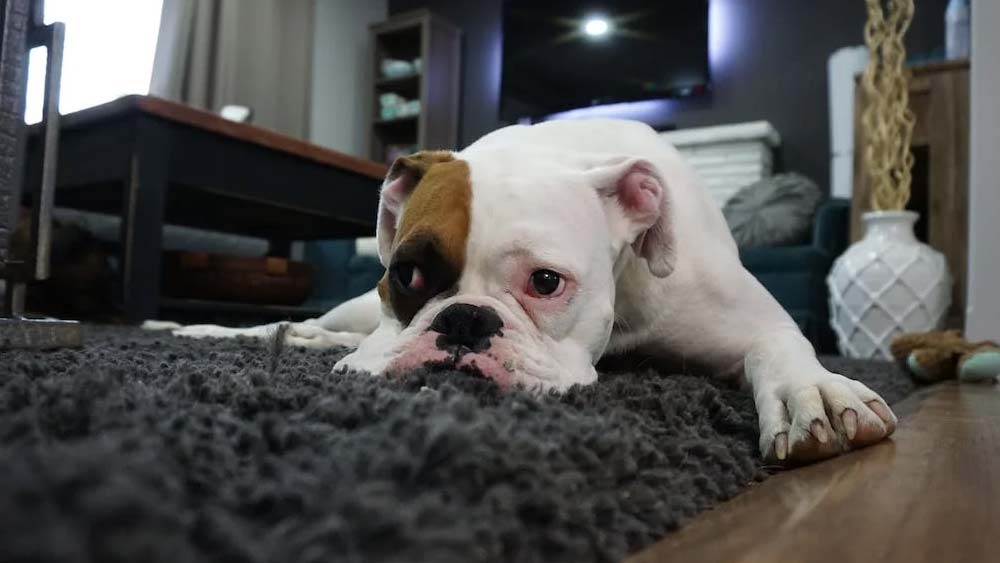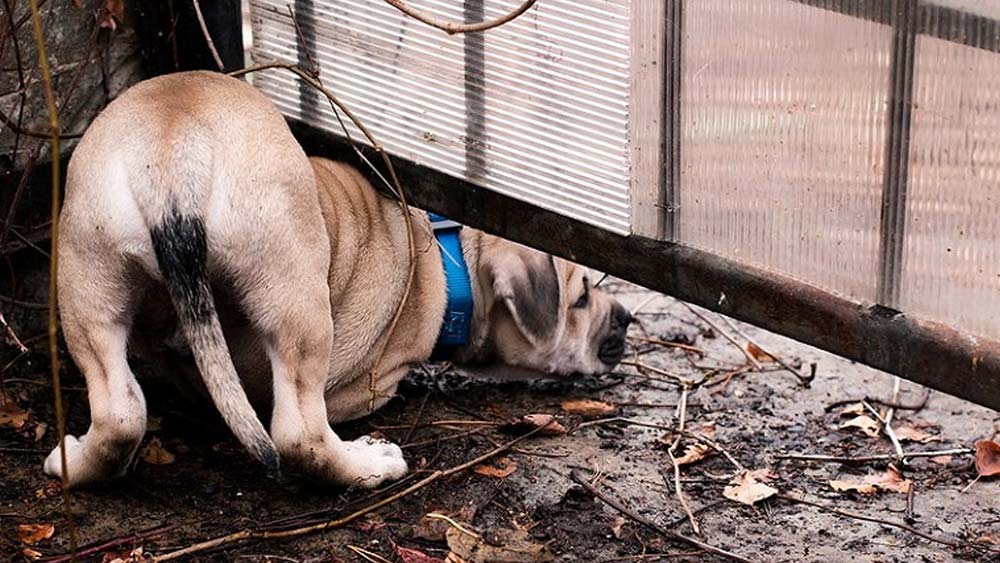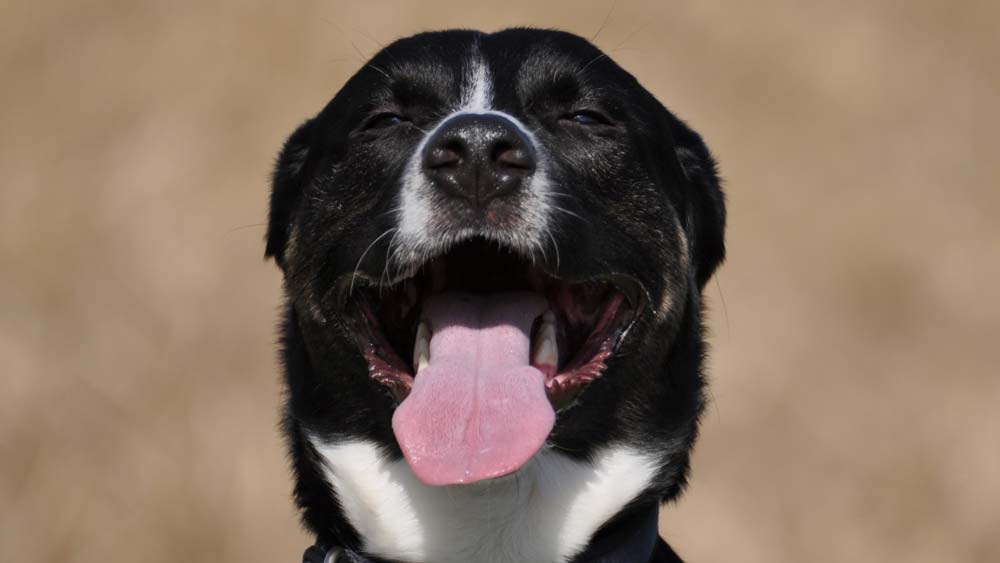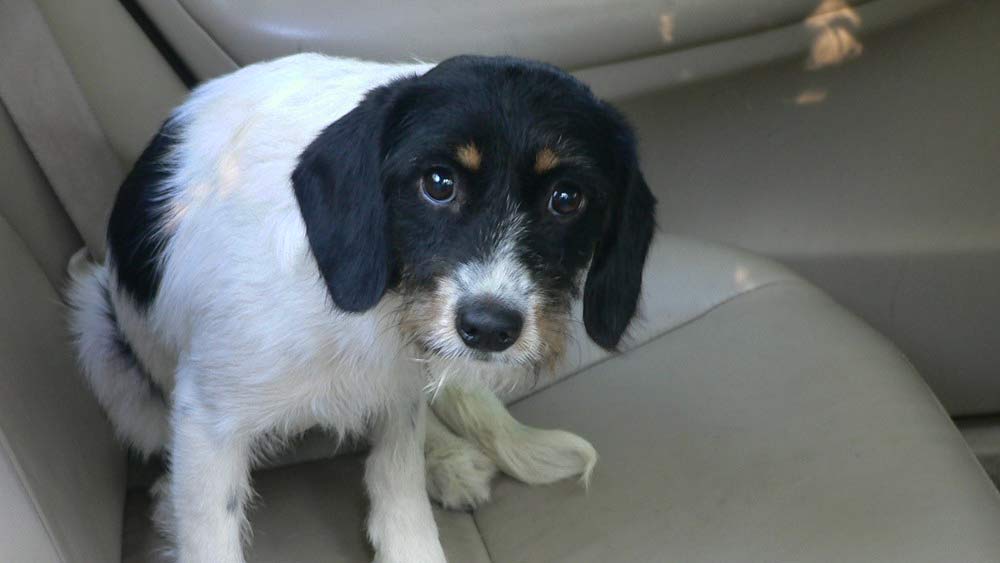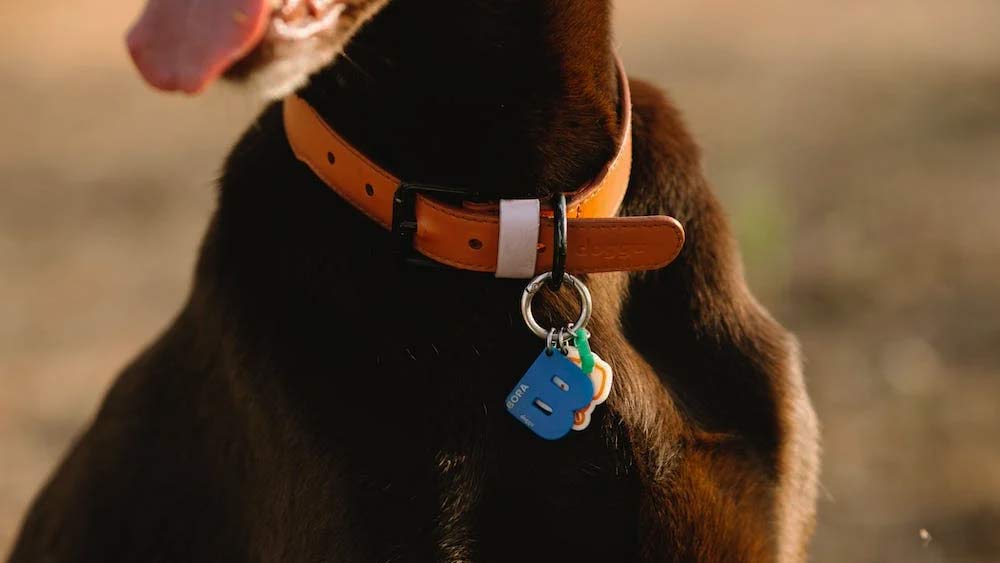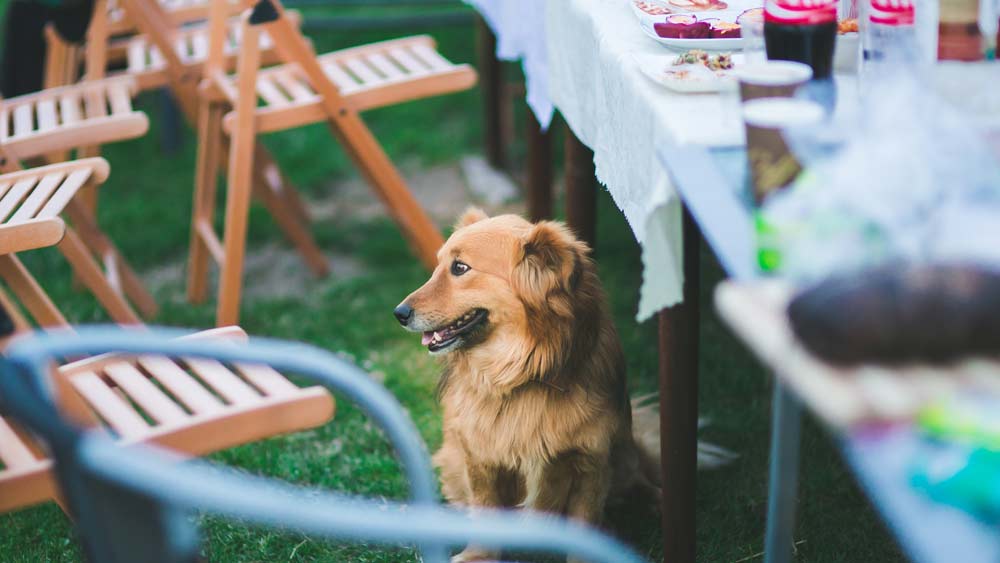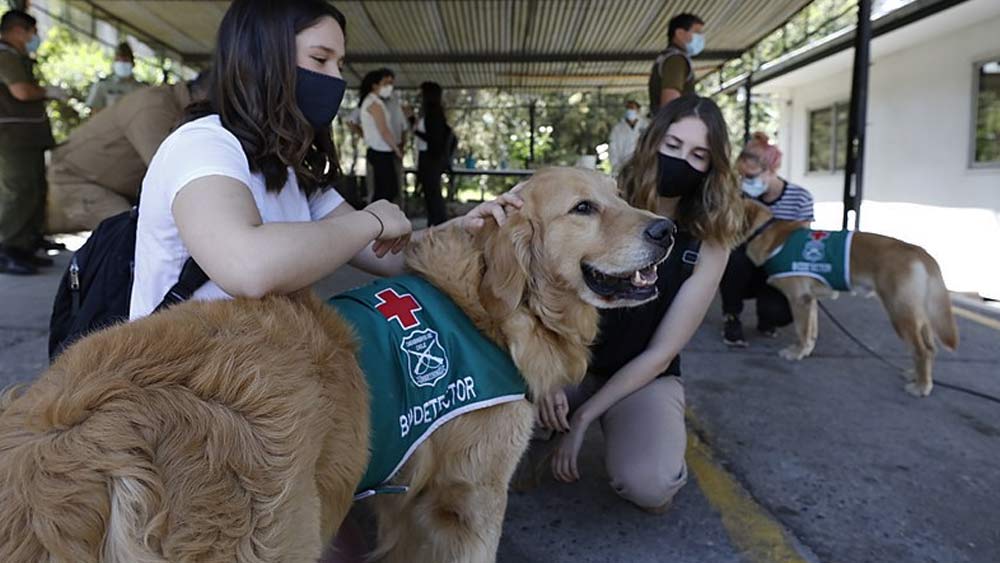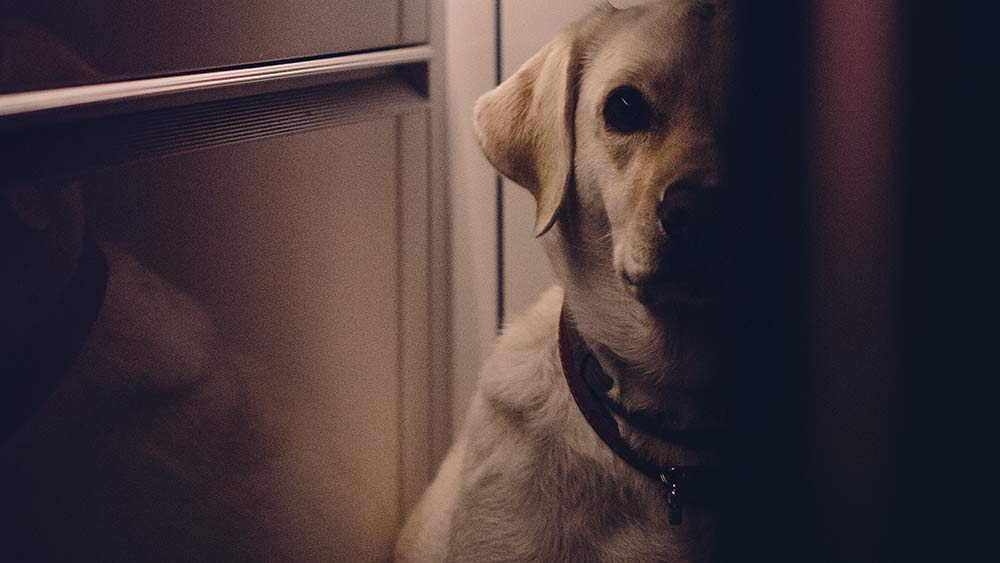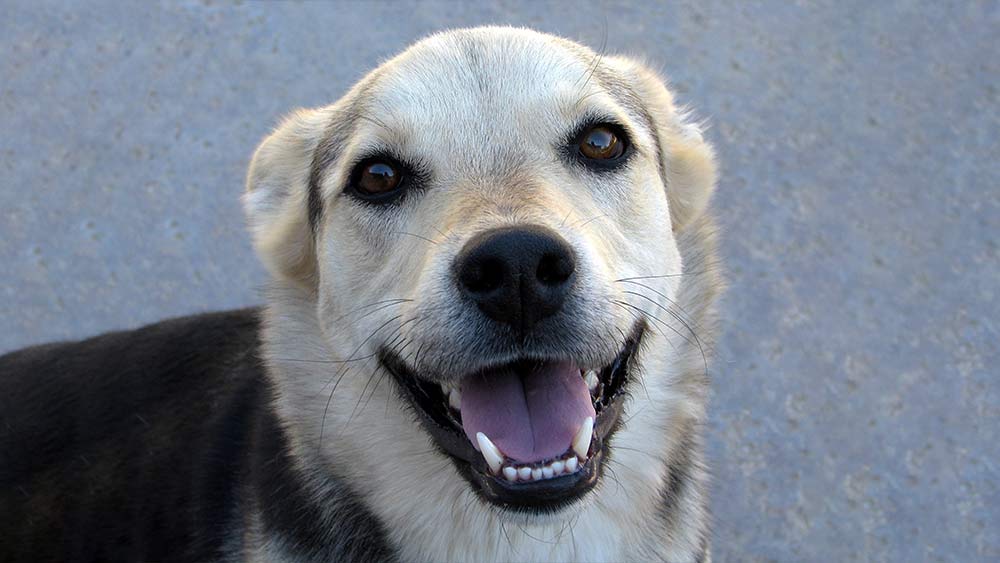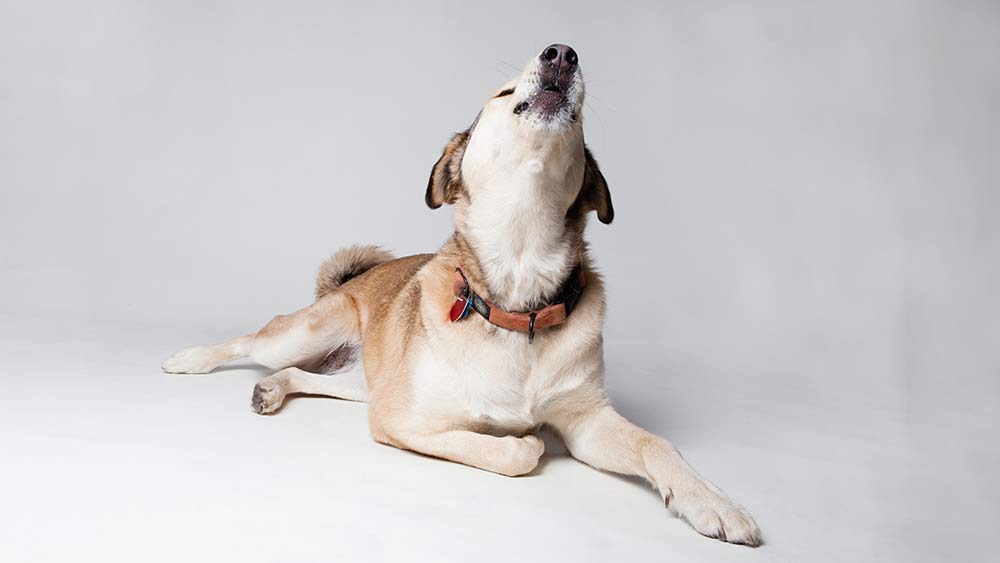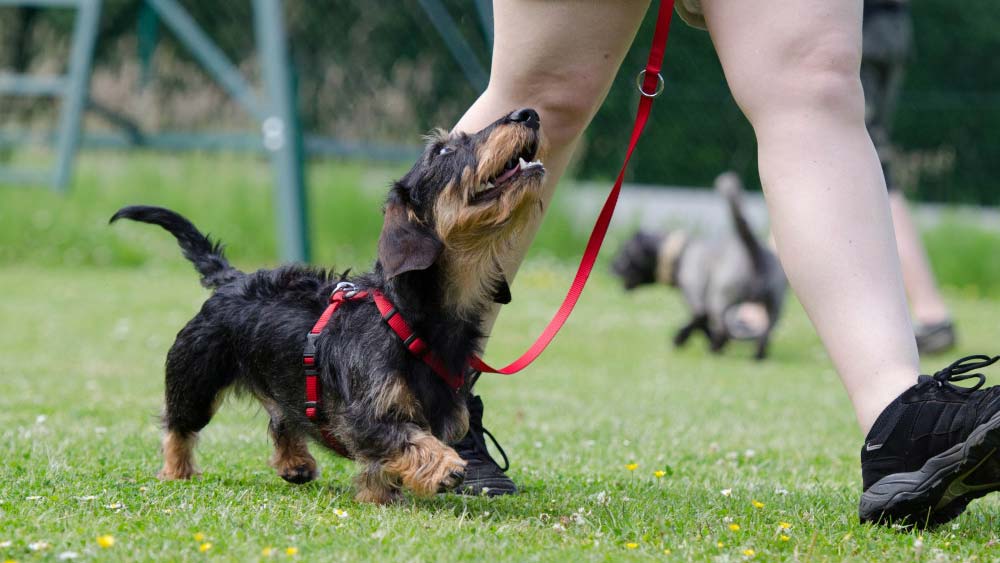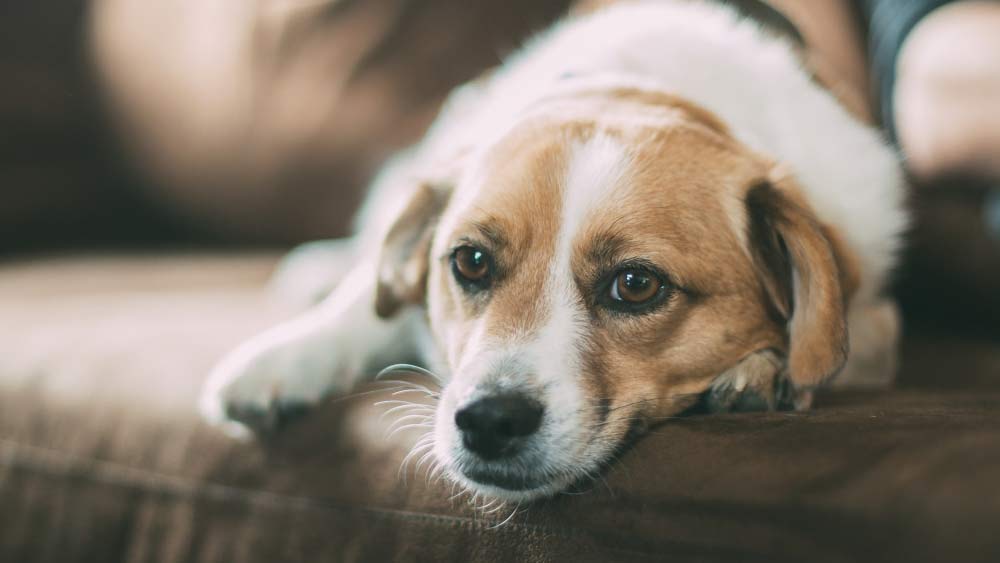Separation anxiety in dogs is a common problem that can be difficult and stressful for pet owners. Separation anxiety occurs when a dog becomes excessively anxious or stressed when left alone at home or in the car. It can manifest itself as destructive behavior, excessive barking, urinating and defecating inside the house, howling, pacing, panting, or salivating. Separation anxiety can seriously affect your dog’s health if not addressed properly. This guide will explore the causes of separation anxiety in dogs, signs to look out for, and effective treatments and management strategies to help your pup cope better with being left alone.
What is separation anxiety?
Separation anxiety occurs when a dog becomes overly distressed when separated from its owner. Separation anxiety is typically triggered by being left alone. It can manifest itself in many ways, such as excessive barking, urinating and defecating inside the house, howling, pacing, panting, or salivating. Separation anxiety can be caused by various factors, including previous traumatic experiences with abandonment or neglect, changes to the home environment (e.g., new baby or pet), or even age-related cognitive decline.
What are the signs of separation anxiety?
The most obvious sign of separation anxiety is excessive barking when you’re leaving your dog alone at home or in the car. Other indicators include destructive behavior (chewing, digging), excessive grooming or licking, howling, panting, pacing, and salivating. Separation anxiety can also cause physical symptoms like loss of appetite or digestive issues.
severe Signs of separation anxiety in dogs
The signs may be more pronounced if your dog is experiencing severe separation anxiety. These can include excessive non-stop vocalization (barking, howling), panting, pacing, and destructiveness, such as chewing furniture or other household items. Separation anxiety can manifest as physical symptoms such as loss of appetite, digestive issues, or excessive licking and grooming. Separation anxiety can also trigger fear-based responses such as trembling, hiding, and avoiding contact with people. If your dog is exhibiting any of these behaviors when left alone, it’s important to seek veterinary advice as soon as possible.
Causes of separation anxiety
1. Past traumatic experiences, such as abandonment or neglect, can cause separation anxiety. Dogs who have experienced these kinds of experiences may develop a fear of being left behind and become anxious when their owners are not present.
2. Separation anxiety can also stem from changes to the home environment, such as a new baby or pet or even a change of address. These changes can be difficult for dogs to adjust to and can trigger anxiety or fear.
3. Separation anxiety can also arise from medical issues such as age-related cognitive decline. Older dogs may become confused when left alone, leading to anxious behaviors.
4. Separation anxiety can also be triggered by physical discomfort due to underlying health problems such as arthritis or joint pain, bladder infections, skin allergies, or other medical conditions that cause pain and discomfort.
5. Separation anxiety can be caused by a lack of proper socialization in puppies and inadequate exercise, mental stimulation, and affection. If a dog isn’t given enough physical and mental stimulation during the early stages of development, they may become overly attached to their owners when left alone and suffer from separation anxiety.
6. Changes in routine or schedule can also trigger separation anxiety. Dogs are creatures of habit, and any sudden alterations to their normal routines can cause confusion and fear, which could lead to anxious behaviors.
7. Separation anxiety can result from overcrowding or isolation when a dog is kept away from other people or pets for extended periods of time without sufficient mental stimulation or exercise. Overcrowding and isolation can lead to depression in dogs, manifesting as separation anxiety when the dog is separated from its owner.
8. Separation anxiety can be caused by an unfamiliar environment, such as a new home, kennel, or vet office, where the dog is exposed to unfamiliar sights, smells, and sounds that make them anxious or scared when their owners are not present.
9. Separation anxiety can also be caused by changes in daily activities, such as leaving for work earlier than usual or staying out later than usual due to unexpected errands or other activities that disrupt your dog’s regular routine and make them anxious when left alone at home.
21 Tips to Reduce and Manage Separation Anxiety in Dogs
When it comes to treating separation anxiety in dogs, the goal should be to create an environment that helps them feel safe and secure when their owners are not present. This can include providing your dog with plenty of exercises, mental stimulation, affection before leaving home, and changes to their daily routine or environment that reduce their anxiety. Here are some tips you can use to manage and treat Separation Anxiety in Dogs:
1. Provide adequate exercise:
Taking your dog on regular walks or engaging them in other forms of physical activity helps to stimulate their bodies and minds, which reduces the likelihood of developing separation anxiety.
2. Offer mental stimulation:
Providing mentally stimulating activities such as puzzles, interactive toys, and training games can help keep your dog mentally engaged, reducing the risk of Separation Anxiety.
3. Create a safe environment:
Creating a safe, secure space for your dog to relax while you’re away can help ease their anxiety. This could include using cozy blankets or cushions and special toys or treats that only come out when you leave home.
4. Provide positive reinforcement:
Using positive reinforcement techniques such as teaching basic commands or rewarding good behavior with treats helps create a positive association between leaving home and receiving rewards which can decrease Separation Anxiety symptoms.
5. Seek Veterinary Help:
If these strategies don’t seem to be working, it may be time to seek help from a veterinarian or animal behavior specialist. They can provide additional advice and treatment options to help your dog cope with Separation Anxiety.
6. Dog Sitter:
If Separation Anxiety persists, you might consider hiring a pet sitter or dog walker to provide companionship and care while you’re away.
7. Medication:
In some cases, Separation Anxiety may be so severe that it requires medication prescribed by a veterinarian.
8. Adopt other pets:
Adding a companion animal to your home can help reduce Separation Anxiety in dogs by keeping them company and providing additional stimulation when you’re away.
9. play music or recordings:
You can use a recording of your voice or calming music to help reduce Separation Anxiety in dogs. This can provide comfort while they’re alone and help them feel more secure.
10. Separate gradually:
When leaving your dog alone for the first time, it’s important to do it gradually. Separating for a few minutes at first, then increasing the length of separation over time, can help your dog learn to cope with Separation Anxiety.
11. Be Consistent in your comings and goings:
It’s important to be consistent with your comings and goings. Dogs can easily become anxious if their owners arrive and leave at different times, as this can disrupt their routine and increase Separation Anxiety symptoms.
12. When you come back, make Time for them:
When you come home from work or an errand, make sure to spend some time with your dog. This can help reduce Separation Anxiety by providing them with the attention they crave when you’re away.
13. Never use Physical punishments as a form of discipline:
Never use physical punishment as a form of discipline for Separation Anxiety. Doing so can create fear and anxiety, making the problem worse. Instead, use positive reinforcement methods such as treats or praise to encourage good behavior.
14. Your Body language matters when you come and go:
Your body language when you come and go can greatly impact Separation Anxiety in dogs. When leaving, try to remain calm and not show any signs of anxiety or worry. When you come home, offer a warm welcome and lots of positive attention to help create a positive association with your return.
15. Keep Chewable Furniture out of reach if you can:
Some Separation Anxiety in dogs can be triggered by them chewing on furniture or other items while you’re away. Whenever possible, try to keep these items out of reach to help prevent Sep Separation Anxiety from occurring.
16. Separation Anxiety doesn’t have to ruin your life:
Separation Anxiety in dogs doesn’t have to disrupt your life. With the right strategies, you can reduce Separation Anxiety symptoms and help your dog feel safe and secure when you’re away from home.
17. Separation Anxiety is a treatable condition:
With patience and dedication, Separation Anxiety in dogs can be treated. Whether you use behavior modification techniques, medication, or other strategies for your dog, Separation Anxiety is a condition that can be managed and improved with the right approach.
18. Separation Anxiety is more common than you might think:
Separation Anxiety in dogs is actually quite common, with an estimated 14 percent of dogs experiencing it at some point. If your dog has Separation Anxiety, know that you’re not alone and help is available.
19. Your Dog’s Separation Anxiety is not your fault:
It’s important to remember that Separation Anxiety in dogs is not the owner’s fault. Dogs can experience Separation Anxiety due to various factors, so don’t blame yourself if your pup is struggling with this issue. With patience and understanding, it can be treated.
20. Reach out for help if you need it:
If Separation Anxiety in dogs is becoming too much to handle on your own, don’t hesitate to reach out for professional help. A professional can provide advice and guidance on how best to manage Separation Anxiety in your pup, as well as additional resources that may be of help.
21. Have patience:
It’s important to have patience with Separation Anxiety in dogs. It can take time for your pup to learn new behaviors and become comfortable with being alone. With patience and dedication, Separation Anxiety can be managed and improved over time.
With the right combination of positive reinforcement, exercise, mental stimulation, and environmental changes, Separation Anxiety in Dogs can be managed and treated effectively. Remember to be patient with your furry friend, as this process may take some time. By understanding what Separation Anxiety is and how it develops, you can better equip yourself to tackle the issue head-on and create the best environment for your pup when they’re left alone.
Conclusion
Separation Anxiety in Dogs is a real and treatable condition, but it takes time to learn how to manage the symptoms. With patience and dedication, Separation Anxiety can be managed effectively with positive reinforcement techniques such as treats or praise, environmental changes like keeping chewables out of reach when leaving your dog alone, mental stimulation activities while you’re away, and exercise throughout the day. It’s important not to use physical punishments for Separation Anxiety as this may worsen the problem. If you feel overwhelmed by Separation Anxiety in your pup, don’t hesitate to seek professional help from an experienced trainer who can advise on how best to handle Separation Anxiety. Remember that Separation Anxiety isn’t your fault; it’s simply something that some dogs experience due to various factors so don’t blame yourself if your pup is struggling with this issue. With understanding and compassion, we can all create a better environment for our furry friends when they’re left alone!
FAQs
How do you stop separation anxiety in dogs?
Separation Anxiety can be managed with positive reinforcement techniques such as treats or praise, environmental changes like keeping chewables out of reach when leaving your dog alone, mental stimulation activities while you’re away, and exercise throughout the day. It’s important not to use physical punishments for Separation Anxiety as this may worsen the problem. If you feel overwhelmed by Separation Anxiety in your pup, don’t hesitate to seek professional help from an experienced trainer who can advise on how best to handle Separation Anxiety.
How do you stop separation anxiety in puppies?
The same techniques used for Separation Anxiety in adult dogs can also be applied to puppies. Positive reinforcement techniques such as treats and praise, environmental changes like keeping chewables out of reach when leaving your pup alone, mental stimulation activities while you’re away and exercise throughout the day are all effective tools for managing Separation Anxiety in puppies. If Separation Anxiety persists despite your best efforts, it may be beneficial to contact a professional for additional advice and guidance.
What to do if you come home to a mess?
If you come home to a mess, the best thing to do is remain calm and avoid getting angry at your pup. Separation Anxiety can cause dogs to act out in destructive ways, so it’s important to not punish them for this behavior. Instead, focus on cleaning up the mess and then try to figure out what may have caused it – Separation Anxiety or something else. If Separation Anxiety is the cause, then it may be helpful to contact a professional for additional advice and guidance. Additionally, creating an environment that keeps your pup mentally and physically stimulated can help minimize Separation Anxiety-related behaviors when you’re not around.
How do I know if my dog has Separation Anxiety?
Common signs of Separation Anxiety in dogs include excessive barking, whining, and howling when they’re left alone; destructive behaviors such as chewing on furniture or other objects; pacing, restlessness, and frequent accidents. Separation Anxiety can also manifest itself through physical symptoms such as vomiting or diarrhea. If you notice any of these signs in your pup, it may be a sign that Separation Anxiety is present. Consulting an experienced professional for additional advice and guidance is the best way to determine whether Separation Anxiety is the cause for the behavior.
Can Separation Anxiety be prevented?
Yes! Separation Anxiety can be prevented by early socialization and providing mentally stimulating activities throughout the day when you’re not around. Additionally, leaving chewables and treats out while you’re away can help keep your pup busy and distracted, reducing Separation Anxiety-related behaviors. If Separation Anxiety is still a problem despite these efforts, seek advice from an experienced professional for additional advice and guidance.
What should be done before, during, and after you leave your dog alone?
Before leaving your pup alone, it’s important to ensure that the environment is safe and secure. This includes providing plenty of chewables and other toys to help keep him busy while you’re away. During your absence, try to provide mental stimulation activities such as scent games or puzzle feeders that can occupy his time and reduce Separation Anxiety-related behaviors. After returning home, make sure to greet your pup with lots of love and affection – this will help reinforce positive behavior when left alone and show them that there is nothing wrong with being apart from you.
Do I need professional help if my dog has Separation Anxiety?
If Separation Anxiety persists despite attempting the techniques listed above, it may be beneficial to seek guidance from an experienced professional. A professional can provide additional advice, guidance, and support in creating a plan to help alleviate Separation Anxiety in your pup. With the right guidance and support, Separation Anxiety is manageable!
Can Drugs help with dog separation anxiety?
Drugs can be used in certain cases of Separation Anxiety but are usually not recommended as the first line of treatment. Drugs may help reduce Separation Anxiety-related behaviors in some dogs, but they should always be used under the guidance and supervision of a veterinarian or professional behaviorist. Additionally, drugs do not address the underlying cause of Separation Anxiety, so it’s important to work with an experienced professional to develop more comprehensive behavior modification plans.
Do Dogs get anxious if you leave them in the car alone?
Yes, dogs can get anxious if left alone in the car. Separation Anxiety-related behaviors may occur in these situations due to feelings of abandonment or fear of being confined. It’s best to avoid leaving your dog in the car for extended periods of time, as this can cause severe distress and anxiety. If it cannot be avoided, ensure that the car is well-ventilated and that your pup is provided with plenty of chewables, toys, and treats to keep him busy while you’re away.
Can separation anxiety in dogs be cured for good?
Separation Anxiety in dogs can be managed with the right guidance, support, and diligent effort. The key is to work closely with an experienced professional to develop a comprehensive plan that addresses the underlying cause of Separation Anxiety and provides behavioral modification techniques to help reduce Separation Anxiety-related behaviors.
Can dog separation anxiety be Cured quickly?
Separation Anxiety in dogs cannot be cured quickly, as it takes time and effort to help manage Separation Anxiety-related behaviors. It’s important to be patient and consistent in your approach, as Separation Anxiety is a complex issue that requires dedicated attention.
Why Do Some Dogs Develop Separation Anxiety?
Separation Anxiety can occur in dogs for various reasons, including changes in the home environment, lack of exercise or stimulation, and even genetics. In order to effectively manage Separation Anxiety, it’s important to identify the underlying cause and develop a comprehensive plan that addresses Separation Anxiety-related behaviors. Additionally, providing mental stimulation activities such as scent games and puzzle feeders may help reduce Separation Anxiety-related behaviors.
What is the Best Way to Prevent Separation Anxiety in Dogs?
The best way to prevent Separation Anxiety in dogs is to start training them early and provide them with consistent structure. Establishing a regular routine, making sure your pup gets plenty of exercise and stimulation, and providing mental enrichment activities are all great ways to help reduce Separation Anxiety in dogs.
Home remedies for separation anxiety in dogs
Home remedies for Separation Anxiety in dogs may include providing your pup with plenty of exercises, mental stimulation activities such as scent games and puzzle feeders, and setting up a safe area for them to relax in. Additionally, leaving lots of chewables and toys around the house can help keep your pup occupied and distracted while you’re away. Separation Anxiety can be difficult to manage, so it’s important to consult an experienced professional.
My Dog Barks loudly when I leave for work. What should I do?
If your dog barks loudly when you leave for work, it could signify separation anxiety. It’s important to consult an experienced professional to help identify the underlying cause of Separation Anxiety and develop a comprehensive plan that addresses Separation Anxiety-related behaviors. Additionally, providing your pup with plenty of exercises and mental stimulation activities, such as scent games and puzzle feeders, may help reduce Separation Anxiety-related behaviors. Also, leaving lots of chewables and toys around the house can help.
Are Dog Sitters a Good Choice when you are away from home?
Dog sitters can be a great option when you are away from home, as they can provide your pup with companionship and help reduce Separation Anxiety-related behaviors. Dog sitters should have experience working with Separation Anxiety in dogs and understand how to effectively manage Separation Anxiety triggers. When hiring a dog sitter, make sure to do your research and find someone who will be a good match for your pup. Additionally, make sure to provide clear instructions and guidelines to ensure your pup is well taken care of.
Can Neighbors Take Care of my dog when I am gone?
Yes, if your neighbors are willing and able to take care of your pup when you are away, it can be a great option. Make sure to provide clear instructions and guidelines on how to care for your pup, such as feeding times, exercise requirements, and Separation Anxiety management strategies. Additionally, it’s important to make sure your neighbors have experience working with Separation Anxiety in dogs, as Separation Anxiety can be a complex issue that requires dedicated attention.
Does ignoring the dog work to reduce its separation anxiety?
No, ignoring your dog when you leave is not an effective way to manage Separation Anxiety. Separation Anxiety requires dedicated attention and management strategies to effectively reduce the behavior. Additionally, Separation Anxiety can be a complex issue that requires professional help.
Is it normal for dogs to whine when left alone?
Yes, Separation Anxiety can cause dogs to whine when left alone. Separation Anxiety is a real issue for dogs and requires professional help to effectively reduce Separation Anxiety-related behaviors.
Are there any games or activities that help reduce separation anxiety in dogs?
Yes, there are plenty of games and activities that can help reduce Separation Anxiety in dogs. Providing your pup with plenty of exercises, mental stimulation activities such as scent games and puzzle feeders, and setting up a safe area for them to relax in are all great ways to help manage Separation Anxiety. Additionally, leaving lots of chewables and toys around the house can help distract your pup and reduce Separation Anxiety-related behaviors.
What are some common Separation Anxiety triggers in dogs?
Separation Anxiety triggers can vary from dog to dog. Common Separation Anxiety triggers include being left alone, changes in routine or environment, loud noises, and unfamiliar people or animals. If you notice your pup exhibiting Separation Anxiety-like behaviors, it’s important to consult an experienced professional to help identify the underlying cause of Separation Anxiety and develop a comprehensive plan that addresses Separation Anxiety-related behaviors.
Do Dogs get better with age when it comes to Separation Anxiety?
Separation Anxiety can be managed throughout a dog’s life. With the right management strategies and professional help, Separation Anxiety-related behaviors can be reduced over time. Additionally, providing your pup with plenty of exercise and mental stimulation activities can help.
What should I do if my dog keeps destroying things while I’m away?
If your pup is exhibiting Separation Anxiety-related behaviors such as destructive chewing and destructive digging, it’s important to consult an experienced professional for help. Separation Anxiety requires dedicated attention and management strategies to effectively reduce Separation Anxiety-related behaviors. Additionally, providing plenty of physical activity and mental stimulation activities can help keep your pup distracted when you are away.
Can Separation Anxiety cause aggression in dogs?
Yes, Separation Anxiety can lead to aggressive behaviors such as snapping and biting. Separation Anxiety is a real issue that requires professional help to effectively reduce Separation Anxiety-related behaviors.
Does playing music help prevent separation anxiety in dogs?
Yes, playing music can help reduce Separation Anxiety-related behaviors in dogs. Calming music has been found to be beneficial for Separation Anxiety relief and can help keep your pup relaxed when you are away. Additionally, providing plenty of physical and mental stimulation activities can help reduce Separation Anxiety-related behaviors.
Do different breeds of dogs have different Separation Anxiety levels?
Yes, Separation Anxiety levels can differ from dog to dog and from breed to breed. It’s important to consult an experienced professional to help identify the underlying cause of Separation Anxiety and develop a comprehensive plan that addresses Separation Anxiety-related behaviors for your pup.
Do stimulating toys help with separation anxiety in dogs?
Yes, stimulating toys can help reduce Separation Anxiety-related behaviors. Providing your pup with plenty of physical and mental stimulation activities can keep them distracted when you are away and reduce Separation Anxiety-related behaviors. Additionally, providing chewables and puzzle feeders can help reduce Separation Anxiety in dogs.
Are there any medications that can help Separation Anxiety in dogs?
Yes, certain medications have been found to be effective at helping reduce Separation Anxiety-related behaviors. It’s important to consult a veterinarian or experienced professional for advice on whether medication is the right choice for your pup and to formulate an appropriate treatment plan.
Are there any natural remedies to calm a dog’s fear of being separated from its owner?
Yes, there are natural remedies that can help reduce Separation Anxiety-related behaviors. Providing your pup with plenty of physical and mental stimulation activities can help keep them distracted when you are away. Additionally, playing calming music or using essential oils such as lavender or chamomile may be beneficial in reducing Separation Anxiety-related behaviors. Lastly, consulting an experienced professional can help you develop a comprehensive Separation Anxiety plan tailored to your pup’s individual needs.
Can essential oils be used to relieve stress and ease the symptoms of separation anxiety in pets?
Yes, certain essential oils have been found to be beneficial in reducing Separation Anxiety-related behaviors in pets. Essential oils such as lavender and chamomile can help reduce Separation Anxiety-related behaviors. Additionally, providing your pup with plenty of physical and mental stimulation activities can keep them distracted when you are away and help reduce Separation Anxiety-related behaviors.
Are Separation Anxiety and Separation Distress in Dogs different?
Yes, Separation Anxiety and Separation Distress are two different issues. Separation Anxiety is an emotional and psychological issue, while Separation Distress is a more physical response to being left alone. Separation Anxiety requires professional help to effectively reduce Separation Anxiety-related behaviors, while Separation Distress is usually addressed through behavioral modification methods.

